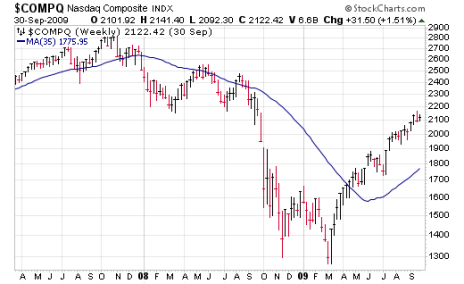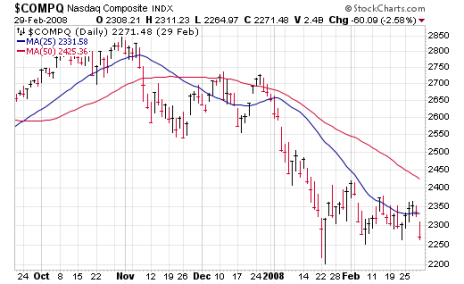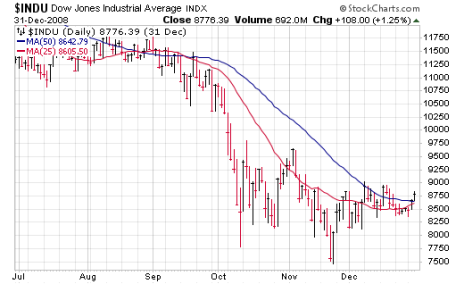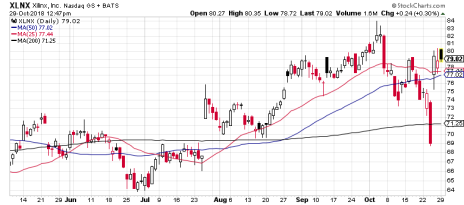The Financial Crisis Wreckage, 10 Years Later
We recently passed the 10-year anniversary of when Lehman went bankrupt and, soon after, Uncle Sam effectively took over AIG. What was a “normal” bear market and economic downturn accelerated lower after that—the S&P 500 fell 47% from mid-September 2008 to its low in March 2009!
Of course, things being what they are these days, there are debates about what caused the meltdown and then what turned the economy around. And there are plenty of horror stories being recounted, too, describing the wealth and jobs that were lost.
But what few people write about is the most important thing to investors—specifically, was there any way to see it coming and to avoid the pain, and can that be applied to future meltdowns?
The answer is yes, and the method for avoiding devastating declines isn’t as complicated as the media makes it out to be. I should know—2008 was the biggest test of the market timing system I had helped fine-tune a few years before (and a giant test for me in general, as I had just taken over as chief analyst of Cabot Growth Investor the year before). Thankfully, it passed with flying colors.




The method: trend following, and specifically our Cabot Trend Lines (which tell us the market’s longer-term trend) and Cabot Tides (intermediate-term). It has nothing to do with the dollar, oil prices, interest rates or (thank Heaven) politics—instead, it’s all about determining which way the market is headed, and staying in gear with that.
The Magic of Market Timing
The Trend Lines average about one signal per year, though it can be far fewer. For instance, the indicator was bullish from April 2016 until this month, when the recent downturn caused it to turn bearish. It’s probably our most reliable (and simple) market timing indicator. In fact, if you had theoretically bought the Nasdaq at every buy signal during the past 18 years and went to cash during sell signals (which you should be doing now), you’d have nearly doubled the Nasdaq’s return (253% to 135%)!
Our Cabot Tides generate an average of three to five signals per year, but again it varies depending on the environment. When both of these trend-following measures are combined with the action of leading stocks, it gives you a real-time picture of the market’s health—no opinions, no guesses, no forecasts, just facts.
So what did these market timing indicators look like in 2008? Well, the Trend Lines really couldn’t have done better—they turned negative in the first week of 2008 and stayed bearish throughout the downturn! The buy signal came in May 2009, and it persisted for nearly a year.
Our Cabot Tides also did a great job, with the initial sell signal in November 2007. There were positive signals during the March-through-May 2008 rally and again in August of that year for a couple of weeks, but the Tides turned bearish in early September, ahead of the Lehman/AIG blowup.
And what impact did this have on my investing advice? Because the indicators were both negative (and almost no leading stocks looked good), our cash position averaged more than 50% in 2008, and we were 90% in cash in early September (after the Tides turned bearish again)!
All told, the Cabot Growth Investor Model Portfolio did take on some water that year—we lost 13.4%—but compared to the 40% decline in the S&P 500 and the devastation among so many individual stocks and sectors, it put our subscribers way ahead of the average investor.
What the Market Timing Indicators Are Saying Now
What about today? While I highly doubt anything like 2008 is on the horizon (thankfully, those meltdowns only happen every few decades), both of our trend-following indicators are again signaling caution.
On October 4, our Cabot Tides flashed a sell signal, as the Nasdaq plunged below its 50-day line, joining the S&P 600 (small caps) and S&P 400 (mid caps) below their key moving average. That turned the intermediate-term trend down.
Then, on October 19, our longer-term Cabot Trend Lines flashed a sell signal—the first time the indicator had been in bearish territory since April 2016! That means, by our measures, both the intermediate- and longer-term trend of the market are pointed down.
Even before our Tides turned negative, we were seeing iffy action among leading growth stocks in September, which stopped us from buying and left us with 16% cash on the sideline entering the month. And after October’s slide started we began throwing stuff overboard on a near-daily basis—our cash position rose to 29% on October 2, 40% on October 4, 52% on October 8 and 61% on October 10! Since then we’ve pared back a bit more, with our portfolio holding a huge 71% cash position right now.
Back to the market, what do our market timing indicators portend? Well, remember, they’re trend following measures, not trend predictors (to make big money you simply have to stay on the right side of the major trends), but we did go back and look at all Cabot Trend Lines sell signals since 2000.
Basically, 60% of the time, the Nasdaq saw at least another leg down of 6% to 8% during the next month or two, with some falling much farther than that. The other 40% of the time, the signals didn’t lead to a ton more selling, with the market finding at least short-term support and rebounding for a few weeks.
Given last week’s action, it certainly looks like the first scenario (another leg down) is underway, but we’ll see how it goes. Either way, I’ll be remaining mostly defensive until the Tides and Trend Lines (and the action of growth stocks) tells a different story.
In the meantime, I’m spending most of my day screening for stocks that are acting resiliently and have great growth stories; I continue to think many leaders of the next upturn (whenever that begins) could show their hand during earnings season in the days and weeks ahead. So far, one that’s caught my eye is Xilnix (XLNX), a chipmaker that is beginning to play in some newer, dynamic fields.
Here’s what I wrote about the stock in yesterday’s Cabot Top Ten Trader:
“Xilinx is a semiconductor stock that has a history of major innovations, including the programmable system on a chip (SoC) and field-programmable gate array (FPGA). Its latest big win is a new classification of processor called Adaptive Compute Acceleration Platform (ACAP), which sets up the company to compete better against Nvidia and Intel in major markets including data center, communications, auto and industrials. The stock is bucking the broad market’s downtrend because Xilinx beat Q2 fiscal 2019 expectations when it reported last Wednesday, delivering 9% revenue growth and EPS of $0.87 (beating by $0.11). Despite seeing potential deceleration in auto and industrial markets, analysts are bullish because communications infrastructure solutions (up 33% in Q2) offers exposure to the 5G buildout, while data center solutions (up 28% in Q2) are becoming a greater contributor. These end-markets are less cyclical than consumer and PC markets, and Xilinx is grabbing market share and guiding above consensus for Q3. A few subscribers have written in looking for artificial intelligence (AI) technologies and Xilinx fits the bill. The market is looking for revenue growth of 17% in fiscal 2019 (ending next March) and EPS growth of 41% (to $3.20) to keep the hot streak alive.”
The stock had actually been acting well through September despite horrid performance from its sector, then it was yanked down by the market. But the blowout earnings report gapped the stock back up to 80 on powerful volume. While it’s not a new name, XLNX is the type of stock that hasn’t been “hot” in a while, which, combined with the compelling story and numbers, could make it a leader during the next upturn.

Learn More

Learn More

Learn More

Learn More





